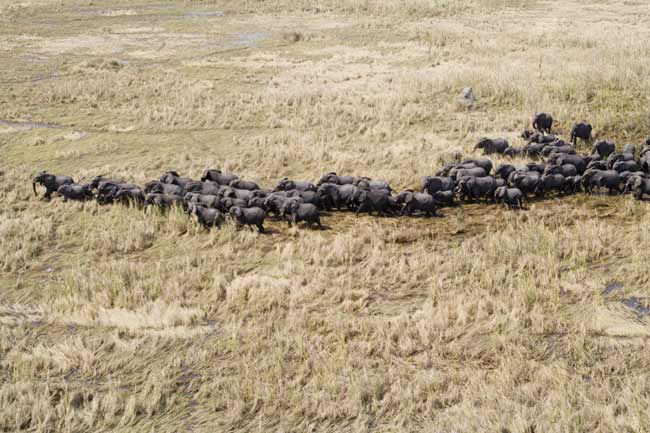Large Mammal Migrations Are Disappearing

Africa is home to spectacular migration events. Large mammals ranging from Grant's gazelles to blue wildebeests pound their hooves across vast tracts of land as the seasons change.
New research suggests, however, that migrations across the continent might be going extinct.
For the first time, scientists have compiled and analyzed data on all of the world's largest and definitive migrating land mammals. The researchers looked at the migration history for a group of ungulates, all of them hoofed mammals, weighing more than 44 pounds (20 kg). The data suggest that one-quarter of these mammals no longer migrate, and human development is responsible for the decline, said Grant Harris, co-author of the study.
In many cases, data on these animals is simply nonexistent.
"I thought, 'Oh my gosh, there's nothing here at all,' and if there's nothing here for these large mammals, this bodes poorly for other species," Harris told LiveScience.
Harris, a conservation biologist, conducted the research while with the Center for Biodiversity and Conservation at the American Museum of Natural History in New York. He is now at the U.S. Fish and Wildlife Service in Albuquerque, N.M. The report was published in the April edition of the journal Endangered Species Research.
Some already done
Get the world’s most fascinating discoveries delivered straight to your inbox.
Large mammals such as the wildebeest or bison depend on green vegetation, like grass, for survival. They live in herds that are too large to depend on a single location for food, so as the seasons change, and rainfall drifts or snow melts, new vegetation grows and the herd tracks these flourishes. But these patterns are unpredictable, so migrations rarely follow a set path, leaving some migrations unnoticed by even experienced researchers.
To understand more about the current status of migrations, Harris and his colleagues focused on population numbers, migration history and known threats for 24 migratory ungulates — 14 in Africa, 7 in Eurasia and 4 North America, (the caribou/reindeer Rangifer tarandus is found in both Eurasia and North America).
The researchers found that for six of these species — the springbok, black wildebeest, blesbok, kulan, scimitar horned oryx and quagga (extinct) — mass migrations either no longer occur, their current status is unknown, or the species is recently extinct.
Africa is home to five of the six mammals that no longer migrate.
What's wrong
Most populations lack basic data such as herd numbers, migration distance or routes traveled, and many reports are over a decade old. The new study provides a framework to guide future conservation efforts as scientists fill in the gaps and devise strategies to preserve migrations, which are sometimes not as obvious as a herd of wildebeest, said Stuart Pimm, a conservation biologist at Duke University who was not involved with the study.
Threats are listed for 20 mass migrants in previous studies. Hunting or poaching is listed as a threat for 17. Most animals migrate across national and park borders, where fencing or roads can block access to food or water. Some conservationists have advocated placing migrating species within parks, but because migrations can extend beyond park boundaries, agricultural and other types of development on the periphery can cut off food and water access. Parks themselves are also fenced, which blocks migration and confines species. This can then aid poachers.
A one-size-fits-all solution for protecting migrations doesn't exist, Pimm said. With so little research on the animals themselves, even less has focused on conservation. But most scientists think it boils down to filling in data on migrations and then finding a way for humans to develop landscapes in a way that has a gentler impact on wildlife. "You can't even think about solutions if you haven't thought about the problems," Pimm said.
- Video: Massive African Wildlife Migration
- Evolution's Most Extreme Mammals
- Top 10 Incredible Animal Journeys


